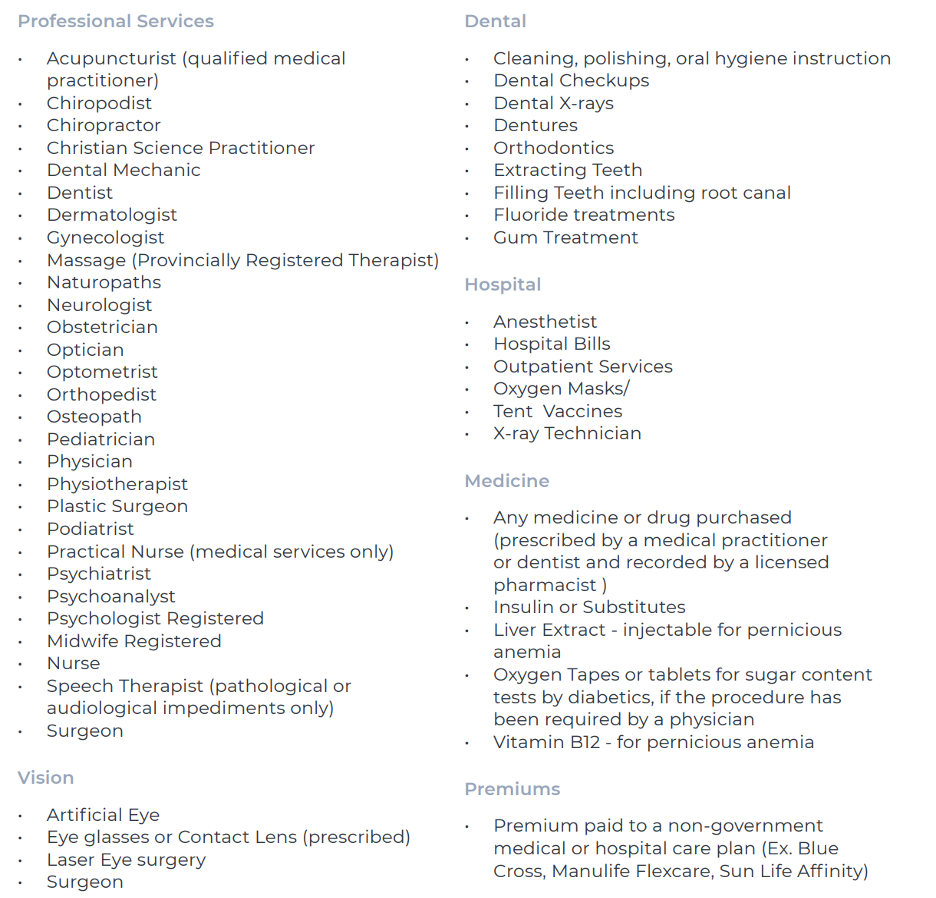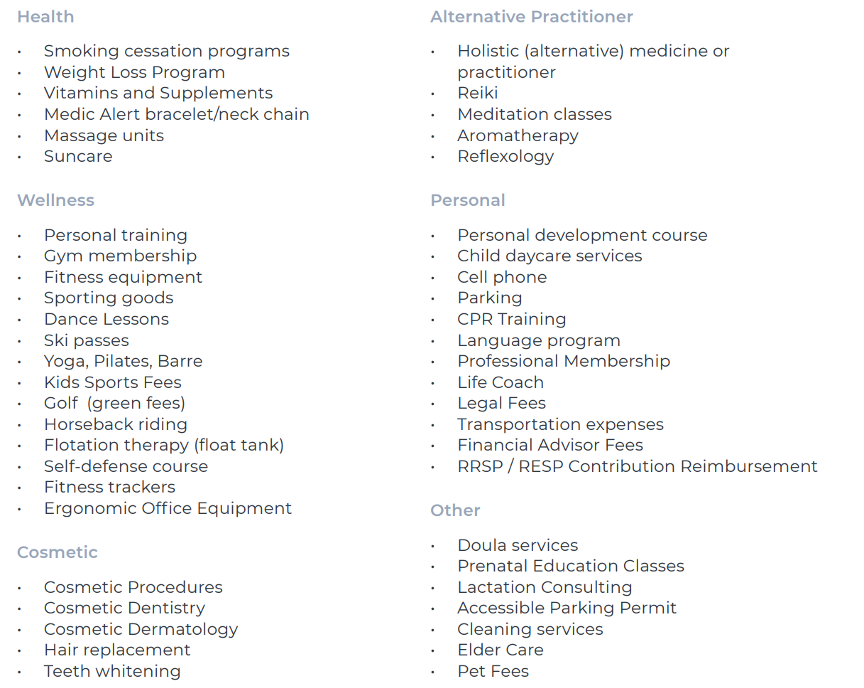By Howard Cheung, Account Executive, Immix Group: An Employee Benefits Company
You are a small or mid-size business. You want affordable employee benefits with costs that you partially control – while having peace of mind that you can provide for unexpected health/drug claims. Read on! This article might just be the benefits blueprint you’re looking for.
In the 2020s, many businesses are being forced to adapt how they attract, hire and retain employees. Even for small businesses, it is not uncommon to have a five-generation age gap with significantly different health and wellness (a.k.a. personal) needs. The challenge: How to satisfy everyone, while keeping a sustainable budget and maintaining the ability to evolve as you free up cash flow and grow?
In this article, I illustrate a sample design that combines the best of two types of benefits:
- Traditional Insured Benefits: coverage for unexpected, catastrophic claims related to health
- Combined Health and Wellness Spending Accounts (CHWSA): cater to modern workforce needs (five-gen age gap) + budget customization.
Note that this is not the only way to design benefits to meet modern needs. There is no one-size-fits-all solution, as every group’s needs, budget and demographics are different.
Matthew Wong, CGA/CPA and Co-founder of Purpose CPA, gives a great high-level overview of the different types and lines of benefits available to SMBs. Matthew helps guide SMBs to navigate the accounting and tax nuances of the different types of benefits, as well as making sure you’re ready for future growth. Read more here:Employee Benefits for Small Businesses — (purposecpa.ca)
Traditional Insured Benefits (base plan)
A Traditional Insured Benefits program provides a set schedule of coverage for a set premium. Annual renewal adjustment is based on claims experience. Insured benefits have an important role in an overall comprehensive benefits plan because they include coverage for catastrophic claims, such as high-cost drugs and out-of-country claims. Including an insured program as the base layer can offerprotection for you and your employees from unforeseen, possibly devastating, health needs. Granted, for some SMBs with limited cash flow a fully insured health and dental program may be out of reach. Additionally, a traditional insured program does not include coverage for any personal/wellness-related expenses.
So, how to implement a benefits program that provides for unforeseen health claims and satisfies a wide variety of health/dental/wellness needs – all the while with limited cash flow? One way is to implement an insured program that provides a minimal amount of coverage for life and accidental death and dismemberment (AD&D), and basic health. The gaps can then be offset with a Combined Health and Wellness Spending Account (CHWSA).
The following three steps build a solid-but-basic insured health benefits plan:
- Secure the base-insured benefits program under a broker-managed pool for the most efficient use of your benefits dollar. See our article “Value of Broker-managed Benefits Pool” for a sound long-term benefits strategy.
- Shift premiums around to minimize “money-in, money-out” type benefits. These are benefits that tend to have more predictable claiming patterns and, typically, a cap.
- Have 80% or lower co-insurance. This helps to reduce premiums while shifting a small amount of expense to the member.
Now to add the CHWSA!
A Combined Health and Wellness Spending Account provides employees with a pre-determined dollar amount of reimbursement for a wide range of expenses outside of their insured benefits, or beyond the plan maximums.
A CHWSA offers the element of flexibility, as each employee has control over how they allocate their funds between the two accounts, that is, Health Spending and Wellness Spending. As the employer, this is where you have the ability to control the cost and empower your employees to fit the plan to their needs.
The differences between the two accounts are:
Health Spending Accounts (HSA): an increasingly popular alternative or top-up to traditional health and dental plans. Only items considered an eligible medical expense by the Canada Revenue Agency (CRA) can be claimed through an HSA. Examples of eligible expenses are medical, dental, vision, diagnostic tests, lab scans and laser eye surgery.
Wellness Spending Accounts (WSA): extend coverage beyond the traditional type of expenses. Through a WSA, items such as work-from-home expenses, gym memberships, transit passes, yoga classes and even e-bikes can be covered. Employees may even choose to allocate the CHWSA dollars to a group savings program, e.g., Registered Retirement Savings Plan (RRSP) or Tax-Free Savings Account (TFSA).
This is how it works, along with a sample blueprint you can follow:
- Employer decides $X amount for the CHWSA
- a) Optional: Set-up different eligible classes. For example, you may decide families get two times more the base amount. Or employees with two or more years of tenure also get two times more the base amount.
- At the beginning of each year (or at time of benefits eligibility), each member allocates $X into HSA and/ or WSA. This allocation is locked in until the next renewal period.
- Any health-related/CRA-eligible expenses paid out of pocket (e.g., expenses not covered under base-insured health, over-limit physio expenses, or dental or vision) may be claimed under the HSA. (See below for a sample list of CRA-eligible expenses.)
- Any other expenses not under CRA-eligible expenses paid out of pocket may be claimed under the WSA. (See below for a sample list WSA expenses.)
- Each time there is a claim/reimbursement, the employer will get an invoice of the claim + fee.
- Once the benefit year ends, employees may again change their allocation mix. Carrying forward any unused balance is optional (employer decides).
- Review your claim reports annually and see where the trends are for future tweaking and decision-making re benefits.
- No renewals (the only “renewal” is the reset of the benefits amount).
What to look for in a CHWSA platform?
Work with a benefits team who can set you up with a CHWSA platform, ideally a fully online digital platform, easy to manage, to maximize efficiency in admin/claims/processing. The platform would provide:
- Adjudication of claims to adhere to CRA guidelines and privacy of members
- Claims processing
- App or online claims
- Payments and reimbursement processing
- Live support
- Fees that range from 8-10% of claims
- Ideally, no setup or subscription costs or float requirements.
Eligibility guidelines
- Must be an incorporated active business with at least one employee. The business cannot only be generating passive income
- The benefit is available to all employees, not arbitrarily given
- Employees who are also shareholders must be collecting income.
So, what’s covered under a Health Spending Account (HSA)?

What’s covered under a Wellness Spending Account (WSA)?

As you can see, there are a lot of items wellness can cover. This is a comprehensive list that can be customized to better align with your business philosophy.
Tax considerations of allocated amounts to HSA vs. WSA
It is important to note that HSA and WSA benefits are taxed differently. The benefit dollars used up in a HSA are tax-free, whereas WSA dollars are taxable benefits. That is, if you claim $1,000 worth of childcare under your WSA, that will be counted as taxable income and you will get a tax slip. This is why there’s a lot of flexibility around WSA – and why we advise that you select wellness categories that align with your philosophy. Unused dollars do not have any tax impacts.
Organization growth and the importance of insured benefits
As alluded to earlier, insured benefits play an important role in having a solid benefits program. The importance of traditional insured benefits is to cover for the unknown, unexpected and high-cost:
- Sudden severe illness
- Accident
- Injury (rehab + drugs + loss of income)
- Pandemic-triggered expenses.
An actionable step right now: Do a benefit survey!
Whether you are applying the above or a different design, it would be wise to understand your own group’s needs by doing a benefit survey. Really quantify what matters to them. Aside from knowing what benefits matter, it may help form other areas of your culture. In knowing their personal needs – anonymously, of course — you can then better understand what type of benefits would work best.
About myself and Immix
I’ve been a licensed benefits consultant and broker for businesses in the Lower Mainland for 14 years. I work with the Immix Group team toward benefits solutions for organizations of varying sizes. We would be happy to help you, no matter what your organization’s size!
Any questions, please feel welcome to reach out to me at howard@immixgroup.ca.
Disclaimer: All organizations and groups are different and applicable strategies should be reviewed with a licensed benefits advisor to review your situation.




